Emma Shields Downing Grant Blog
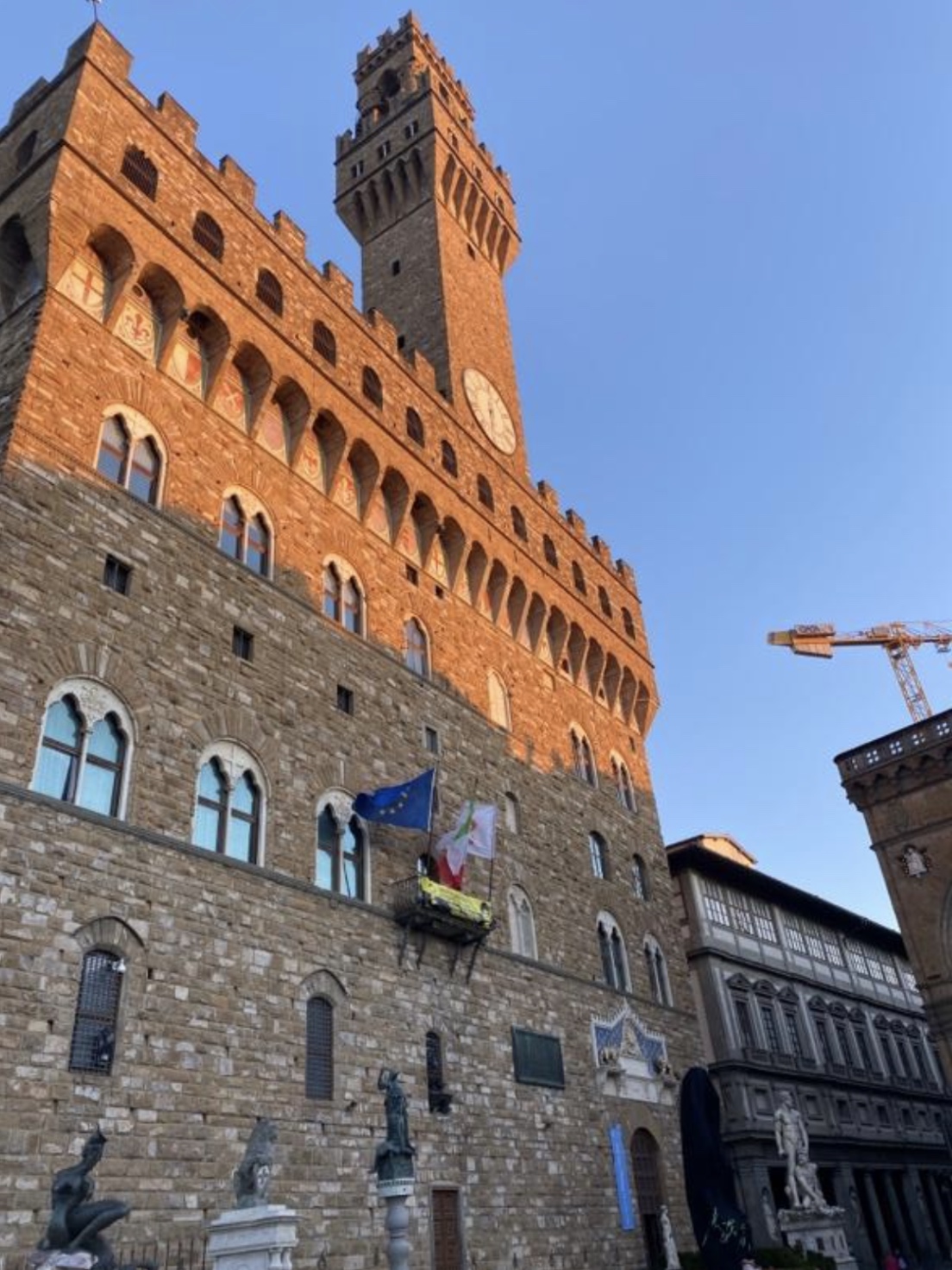
Thanks to the wonderful instruction and inspiration from Professor Shaneyfelt and the entire Art History department at Vanderbilt, I chose to complete an independent study in my final semester of study on Bronzino’s Chapel of Eleonora in the Palazzo Vecchio. The chapel was constructed and painted for Cosimo’s new Spanish bride, Eleonora di Toledo in her private apartments. Eleonora is a fascinating character, as she yielded more power than any other woman in Florence at the time. She even occupied the position as the head of government when Cosimo was away for long periods of time. In addition, her Spanish sense of design and fashion had profound impacts on Florentine society. As I worked through my final paper, I wanted to discover this chapel in context in the Palazzo Vecchio as to gain a better understanding of Eleonora, her space, as well as the Medici family in the sixteenth century.
I got into Florence early on the morning of Tuesday March 8th, brimming with excitement to explore the city. I had my ticket to visit the chapel on Wednesday, so I took the opportunity to explore the city and the Uffizi Gallery on Tuesday. I walked all around the city, trying my best to soak in the essence of the city, hoping to connect the chapel and the role of the Medici in Florence. As I strolled through the streets, on every corner I stumbled upon something I had studied in one of my classes; I could nearly hear Professor Shaneyfelt’s lectures on Renaissance Florence in the back of my head as I passed by the Orsanmichele and the Duomo. In the Uffizi, I felt as though the slides I had seen in class had come to life, and indeed they had. I was in utter awe of the city, and felt a deep sense of gratitude for the opportunity I had been given.
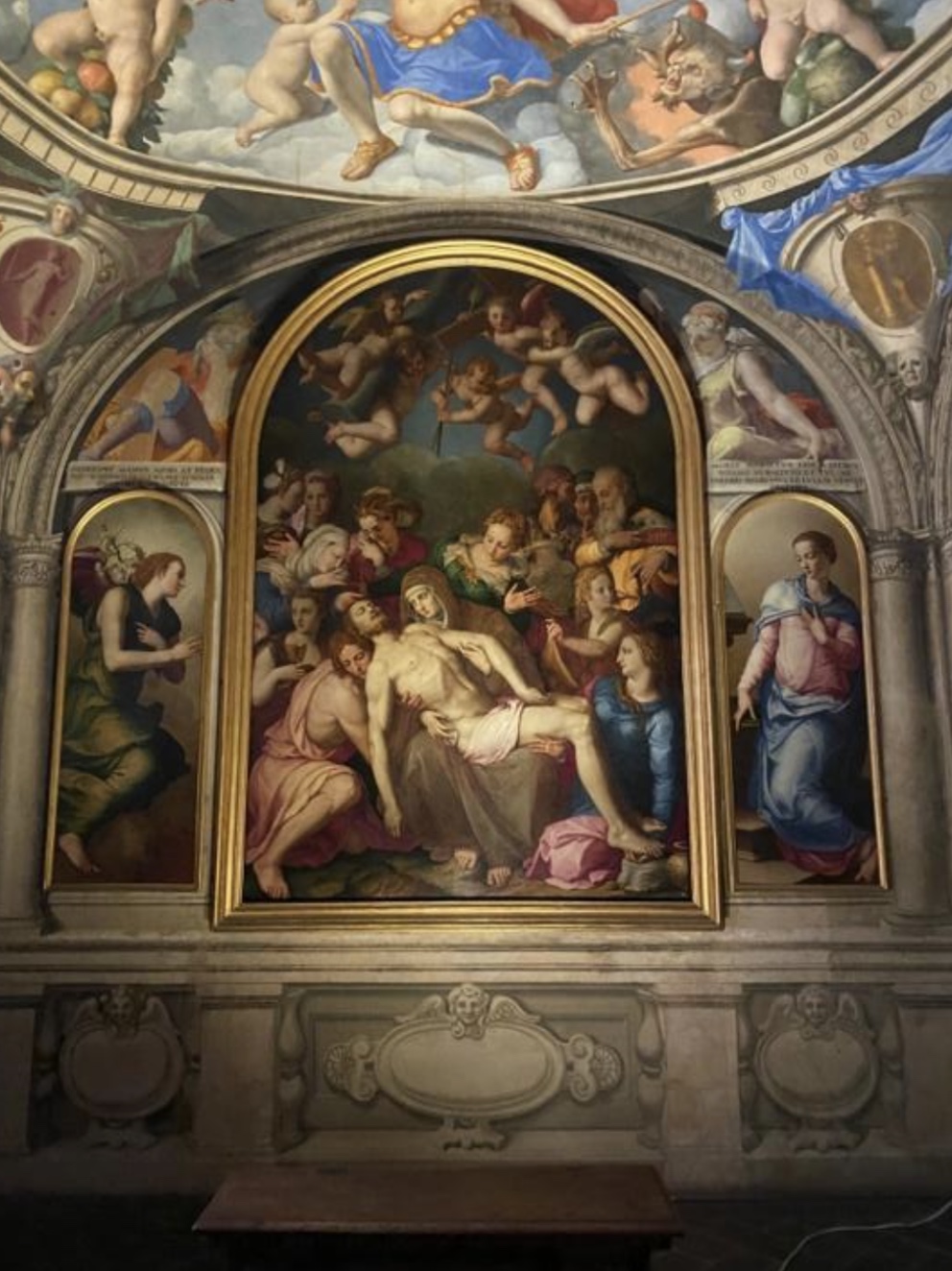 Exhausted from a day of travel and exploration, I settled into my hotel to rest. That night, I took time to go over my notes from the books I had read prior to my visit; I wanted to be able to effectively use every second I had in the chapel. I woke up on Wednesday morning and made my way to the Palazzo Vecchio. As I entered I tried to envision what it might have been like for Eleonora and Cosimo de Medici to enter through those very doors into their home. I stepped into the Salone dei Cinquecento, and passed through the various halls and private rooms on the first floor. What might it have been like to live in a space where laws were actively being made, and government was being conducted?
Exhausted from a day of travel and exploration, I settled into my hotel to rest. That night, I took time to go over my notes from the books I had read prior to my visit; I wanted to be able to effectively use every second I had in the chapel. I woke up on Wednesday morning and made my way to the Palazzo Vecchio. As I entered I tried to envision what it might have been like for Eleonora and Cosimo de Medici to enter through those very doors into their home. I stepped into the Salone dei Cinquecento, and passed through the various halls and private rooms on the first floor. What might it have been like to live in a space where laws were actively being made, and government was being conducted?
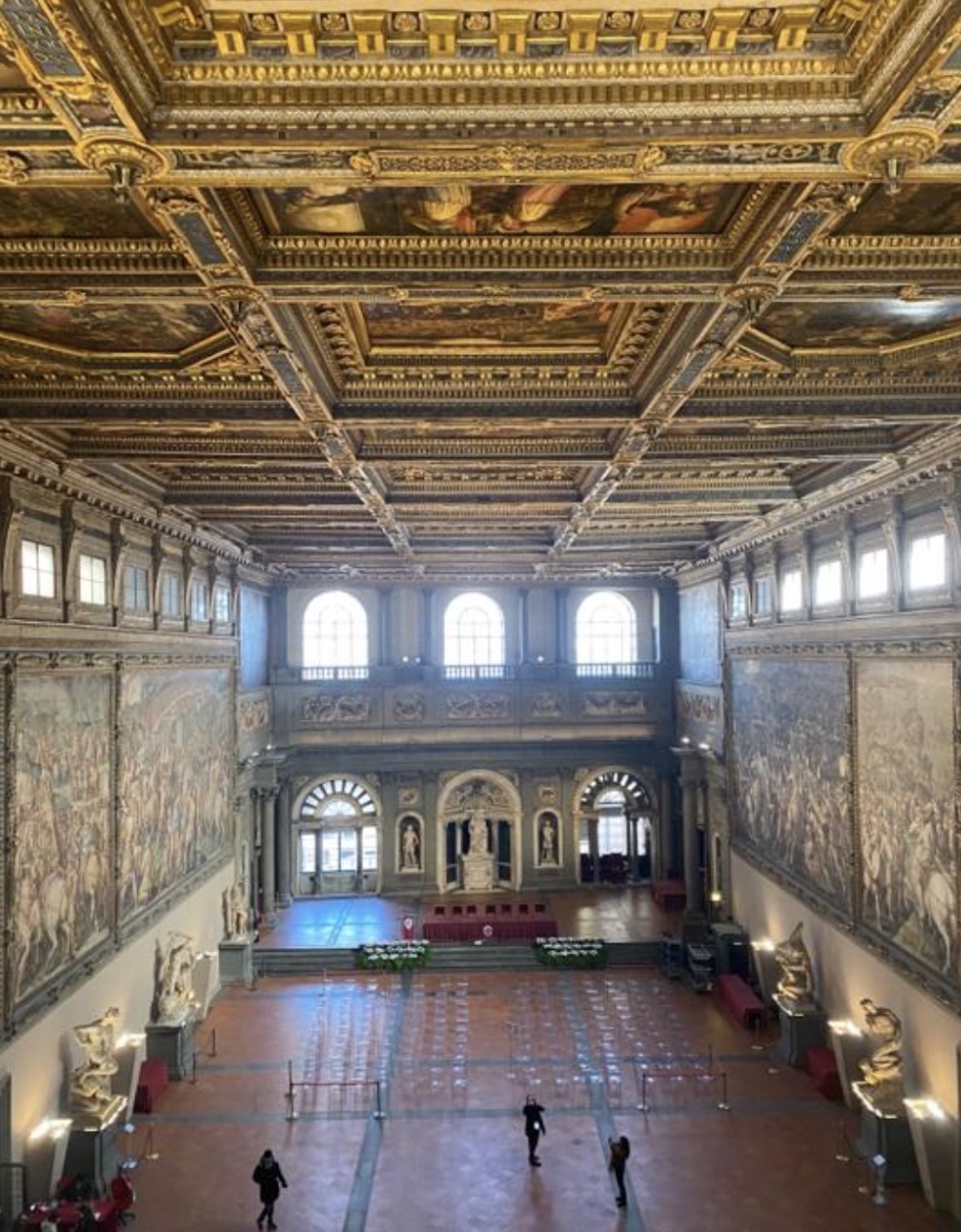
I made my way upstairs and arrived at Eleonora’s private apartments. From there I stepped into the Chapel that juts off of her “green room ”, now painted a light green color but which used to display an assortment of flora and fauna from her native Spain. As I entered the space I was struck by its intimate nature. It had one small entrance that, when passed through, felt as though one was entering a portal to a universe in which only this chapel existed. It was all consuming, and I could feel straight away the religious power this space yielded. Painted entirely by Bronizino, the walls of the chapel depict stories from the life of Moses. The fresco cycle of The Crossing of the Red Sea and Moses Appointed Joshua (south wall), The Brazen Serpent (west wall, entrance wall), and Moses Striking the Rock and the Gathering of Manna (north wall) on the three walls work in tandem with the Lamentation and Annunciation altarpiece, as well as the ceiling vault featuring scenes with St. Michael, St. Jerome, St. Francis , and St. John the Evangelist to convey this idea of Medicean legitimacy and strength through Eucharistic symbolism.
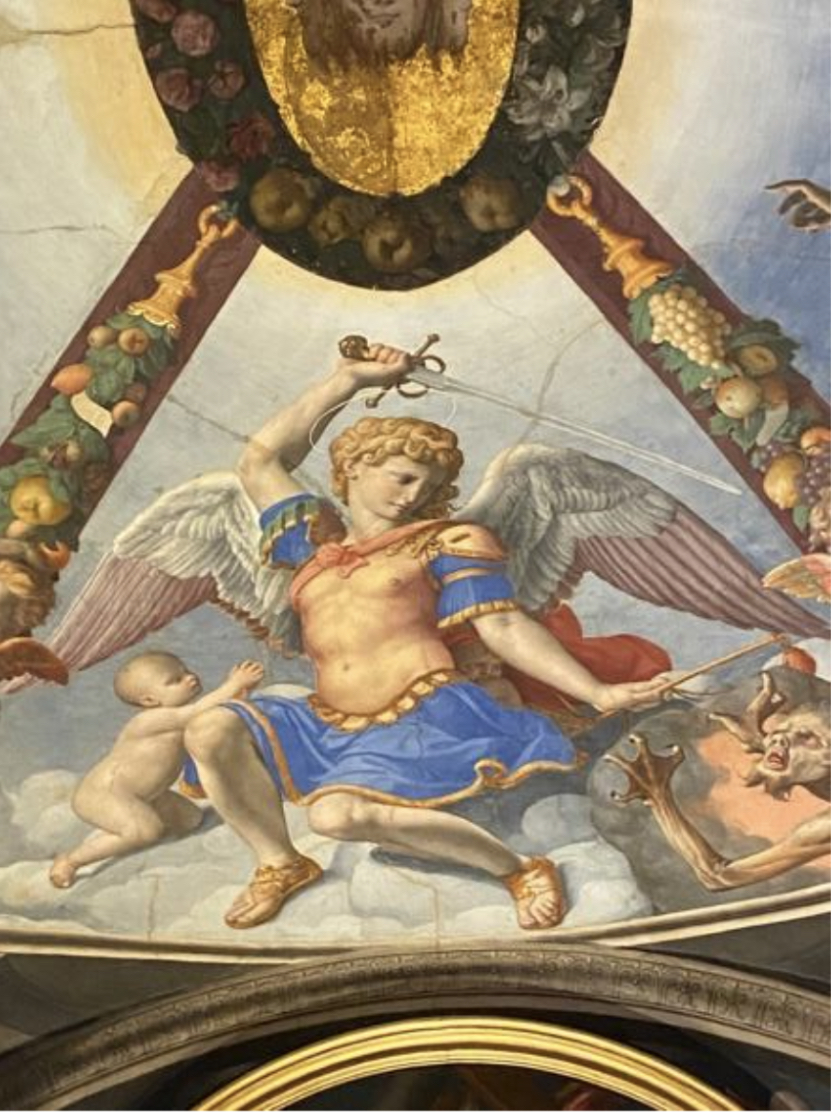
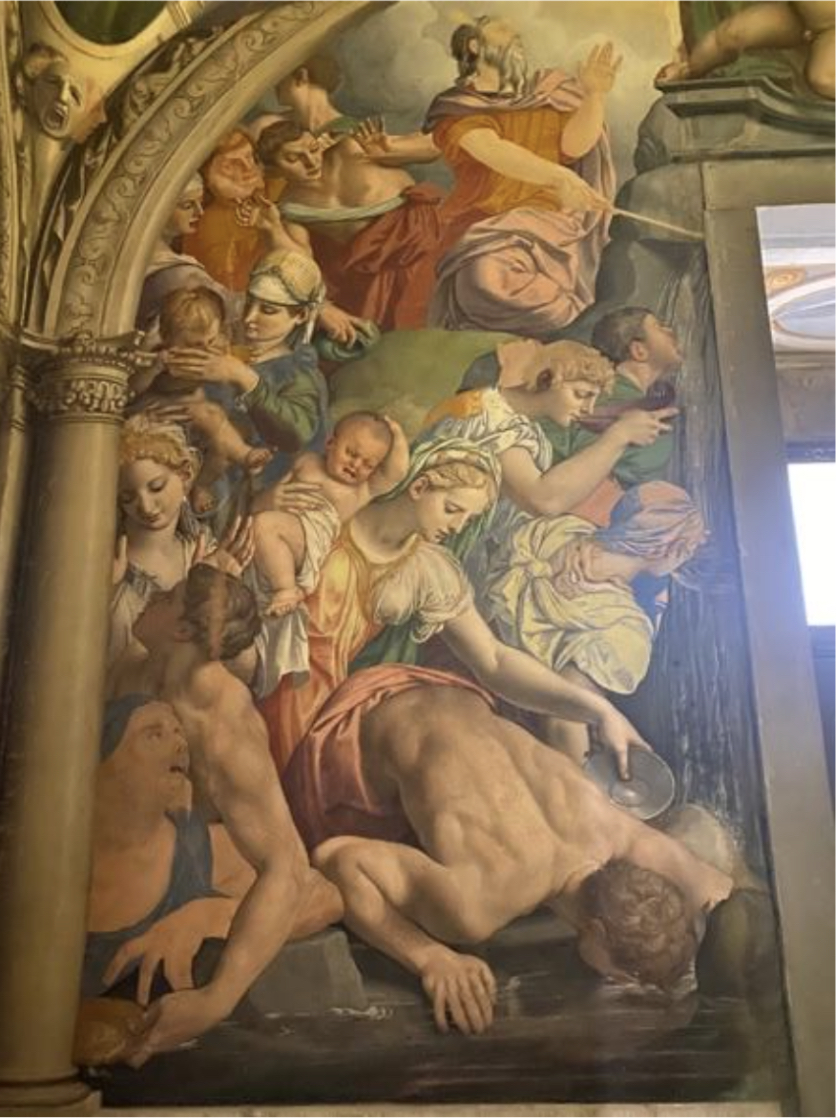
In this room, Eleonora di Toledo, the wife of Cosimo de Medici, would have private prayer time and receive the Eucharist. It was her personal space located within her private apartments. It was while standing in the room itself that I decided to take my Independent Study paper that I am completing in a new direction. Up until that point I was focused solely on the Medicean political aspect of the space and how it operated as a piece of propaganda. What I discovered to be more fascinating was the fact that all of these elements, while true, were in a private space that only Eleonora would have access to. The symbolism of Medicean redemption was indeed something that Cosimo liked to display in much of his art and day-to-day optics in Florence, however, the choice to place it in a private chapel was intriguing to me and this visit helped me explore the question of why this was done.
I did not realize how impactful seeing the space in person, as well as in context with the entirety of the Palazzo Vecchio until I was there. I feel equipped to present a more whole research paper at the end of the semester having experienced the space for myself, and for this I am remarkably thankful to Vanderbilt University’s Art History Department, Professor Shaneyfelt, and the Downing Family.